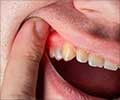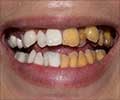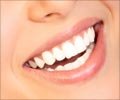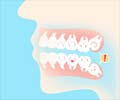How can Loose Teeth be Treated?
The treatment depends on the cause of loose teeth and may involve the following procedures-
- Extensive gum cleaning
- Occlusal adjustment (bite adjustment)
- Splinting
- Night guards
Extensive gum cleaning-
Cleaning the mobile tooth free of all bacterial sources may reduce mobility. It also helps to control underlying periodontal disease, which is the root cause of teeth mobility.
Occlusal adjustment-
The bite (occlusion i.e. how the teeth meet together) is adjusted by minor reshaping of the biting surfaces of the teeth so that they receive less force. Bite adjustment is achieved with orthodontic treatment.
Splinting-
Splinting involves joining the loose teeth to the adjacent firmer ones so that the biting force is distributed among groups of teeth rather than individual loosened teeth. Teeth which are mobile by just a millimeter can be treated with splinting. Splinting is usually done using a thin steel wire, which is passed through the spaces between the loose teeth, and the adjacent strong teeth in a specific pattern, so as to attain maximum stabilization of the loose tooth.
Night guards-
Teeth that are loosened by grinding or clenching habit can be firmed by wearing a night guard. The night guard fits over teeth and prevents grinding.
Tooth extraction-
Teeth which are loose and which move in all direction may have to be extracted.

















